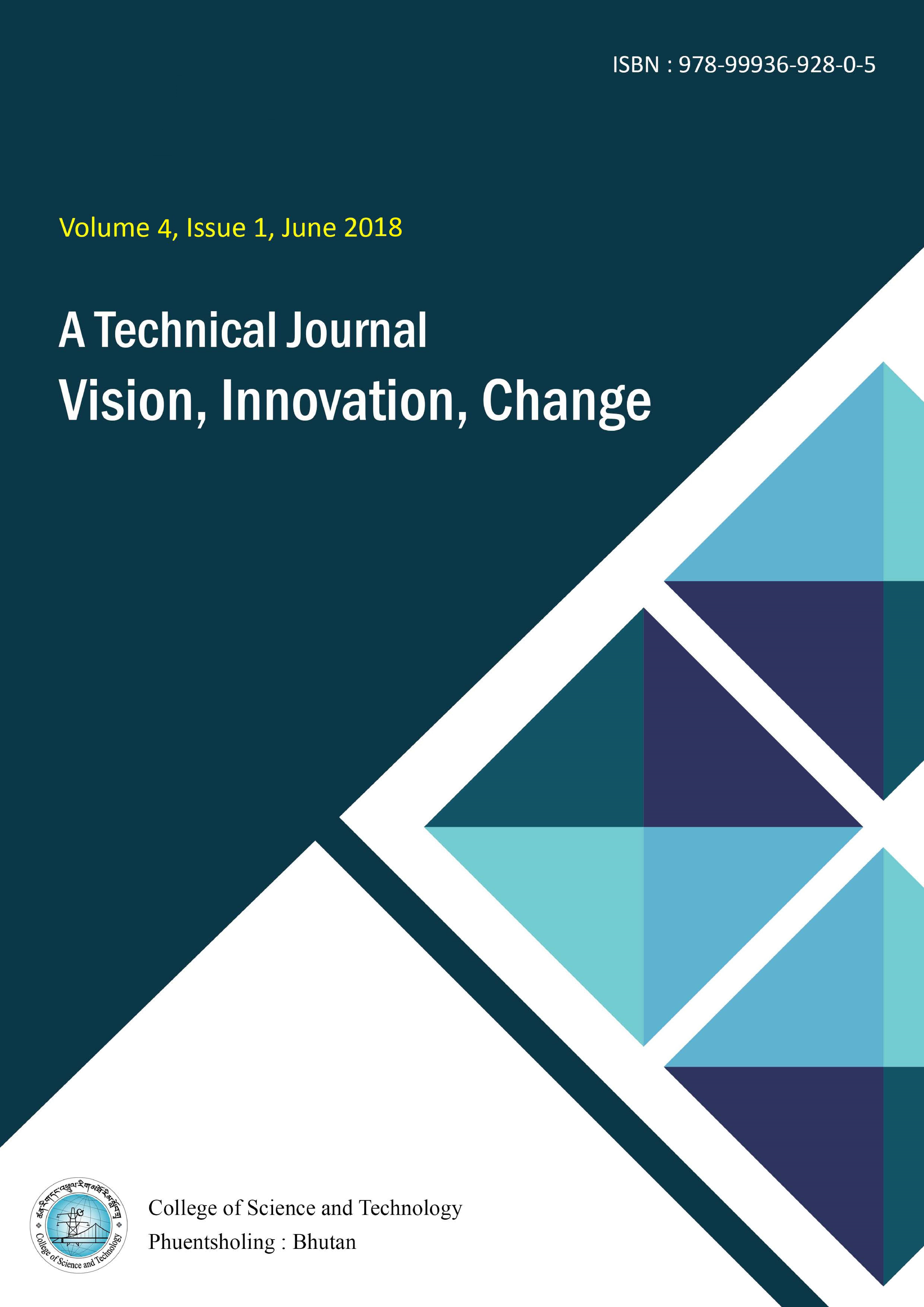STRUCTURAL ASSESSMENT OF BHUTANESE TRADITIONAL BUILDING
Abstract
Rammed earth construction practice in Bhutan is distinctive with its own architectural necessities and speci[1]fications. It cabinets the country’s rich culture meanwhile preserves the traditional culture of Bhutan. The construction practice is grounded based upon the past knowledge of the craftsmen and their thumb rules. Hence, a traditionally built structures are very probable to experience unanticipated structural failure during its life time due to non-engineered practice of construction. Therefore, it is essential to make buildings structurally safe under various unexpected load. This is realized by formulation of design aids to guide the construction of traditional rammed earth buildings. It is necessary to assess the present constructional practice and structural defects of the building and to accomplish this, so seven rammed earth buildings in Wangchang Gewog in Paro Dzongkhag were surveyed. Structural defects and design of each building was recorded from which cracks and uneconomical arrangement of joist was the most prom[1]inent drawback found on the buildings. Numerous probabilities of adapting and refining the present buildingswere carried out with reference to the possible causes of defects and shortfalls composed from several data from different sources and frequent site visits. Based on the collected data and literature reviews, a design charts for joist spacing and rafter was plotted, and a structural stress modelling with several parameters and considerations were conducted
Downloads
Published
How to Cite
Issue
Section
License
Copyright (c) 2018 Zorig Melong- A Technical Journal

This work is licensed under a Creative Commons Attribution-NonCommercial-ShareAlike 4.0 International License.
All articles published in Zorig Melong are registered under a Creative Commons Attribution-NonCommercial-ShareAlike 4.0 International License. unless otherwise mentioned. The journal allows unrestricted use of articles in any medium, reproduction, and distribution by providing adequate credit to the authors and the source of publication.



